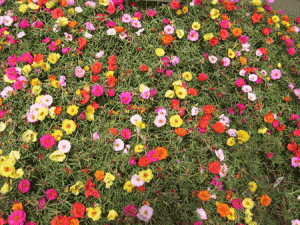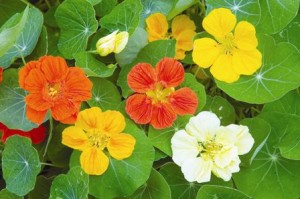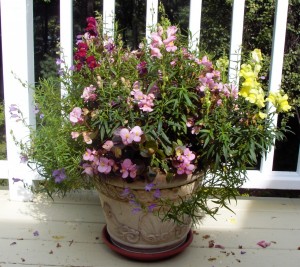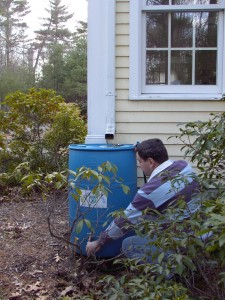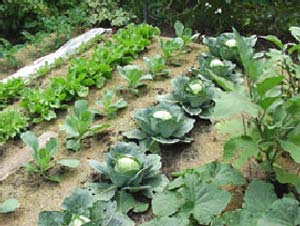Gardening in a Time of Drought
May 2012
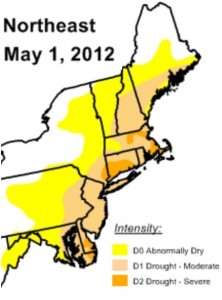 You can be forgiven if you read the headline of this article and thought, ‘what drought?’ Your grass is green and your spring bulbs bloomed beautifully. But as the chart nearby attests, the dry winter and drier spring have had a cumulative effect, leaving the top layer of soil in which we garden without sufficient moisture.
You can be forgiven if you read the headline of this article and thought, ‘what drought?’ Your grass is green and your spring bulbs bloomed beautifully. But as the chart nearby attests, the dry winter and drier spring have had a cumulative effect, leaving the top layer of soil in which we garden without sufficient moisture.
We’ve had less than six inches of rain so far this year when we receive an average of fifteen inches by now. That will exacerbate the problem in June and July, when water use spikes upward and the supply in reservoirs and aquifers will be inadequate. Because many towns have water bans even on normal years, we should prepare for even more stringent measures this year.
So, what is a gardener to do? Start by prioritizing. My first advice is also the hardest for most homeowners: stop watering your lawn. Lawns allowed to go dormant will return with the cool temperatures and rains in the fall. The resulting lawn may not be picture perfect, but it is better off unwatered than receiving inadequate waterings. And, stop fertilizing. The more your grass grows, the more water it needs.
If there are no watering restrictions in your community and you have a small lawn that can be watered easily with a hose, soak it deeply, once a week and skip the daily sprinklings which do more harm than good. Much of the water from a light spritzing is lost to evaporation and what doesn’t evaporate lays in the top half-inch of soil, encouraging shallow roots that will die when they dry out on a hot day.
My second piece of advice is to plant intelligently. Annuals would seem to be the next to go, but you have three ways to enjoy annuals during the driest summer. One is to buy those plants that are naturally drought tolerant. While geraniums can survive dry days and keep flowering, a petunia that has dry roots will shed it flower buds and look as unhappy as it feels. Marigolds, zinnias, portulaca and nasturtiums are all happy in dry soil where coleus, cosmos, impatiens and begonias will sulk.
You may be able to keep annuals moist by using captured gray water. Gray water is water that may have soap in it from hand washing, the water that comes out of the shower head before the hot water arrives, and the water used to wash vegetables before they are prepared for a meal. Don’t include water that has harsh chemical such as bleach in it. Use old plastic containers, milk jugs, or cat litter containers to store the water. Pour it on the plants early in the morning to give them a good start to the day.
A third way is to use containers for bursts of color around your property. Using container gardens means you’re putting water exactly where it’s needed. On June 14, Mass Hort will offer a talk on ‘creating glorious container gardens’ as part of its Thursdays at the Hort series.
Perennials range from water hogs to drought tolerant plants that, once established, can survive pretty much on their own. The caveat with drought-tolerant plants, is that they must first have established their roots. The daylily or black eyed susan (rudbeckia) you bring home today, will need regular watering for several months while it develops an extensive root system. A plant that went in last year will be fine if it is a dry summer. That means you can’t plant a drought-tolerant garden today and expect it to go without water this summer. But give it a year and it will ready to do just that.
The same goes for drought-tolerant trees and shrubs. Shrubs will need supplemental water for a year if Mother Nature isn’t generous with rainfall. Small tree require two years of supplemental watering and a large tree may require help for five years before it can survive a drought with suffering setbacks.
One of the best ways to collect water is from your roof. A rain barrel attached to your downspout will fill with 55 gallons of rainwater when you receive as little as a quarter-inch of rain on your property. That quarter-inch will barely wet the surface of the ground, but the water that runs off the roof can be used to water containers or can be hooked to a soaker hose to water a nearby bed. Note, however, that rain barrels do not produce enough pressure to use as regular hose for watering. However, attach a rain barrel to each downspout and you will be able to keep container gardens and the beds close to your home watered in all but the very driest of summers. Rain barrels are an ecologically friendly solution to a drought.
Cover all bare ground in your beds with a two to three inch layer of mulch. Mulch can be shredded bark or wood, chipped leaves, grass clippings (but not from treated lawns—the chemicals in the lawn products will sicken or kill many decorative plants). Two to three inches is enough to keep the moisture in the soil by preventing evaporation and the weeds (who would steal the water) from growing. Never put down more than three inches or you will limit the ability of rain or water you put on the bed to get through to the soil. Never put mulch in contact with the plant stem or trunk because it allows insects to attack the bark.
Mulch also belongs in the vegetable garden where it reduces your work and helps to maintain a more consistent moisture level in the soil. A couple of sheets of newspaper on the paths, covered with clean grass clippings or fine bark mulch eliminate almost all weeds. Around vegetable plants, use chipped leaves, untreated grass clippings, or heat-treated chopped straw to hold moisture in the soil.
